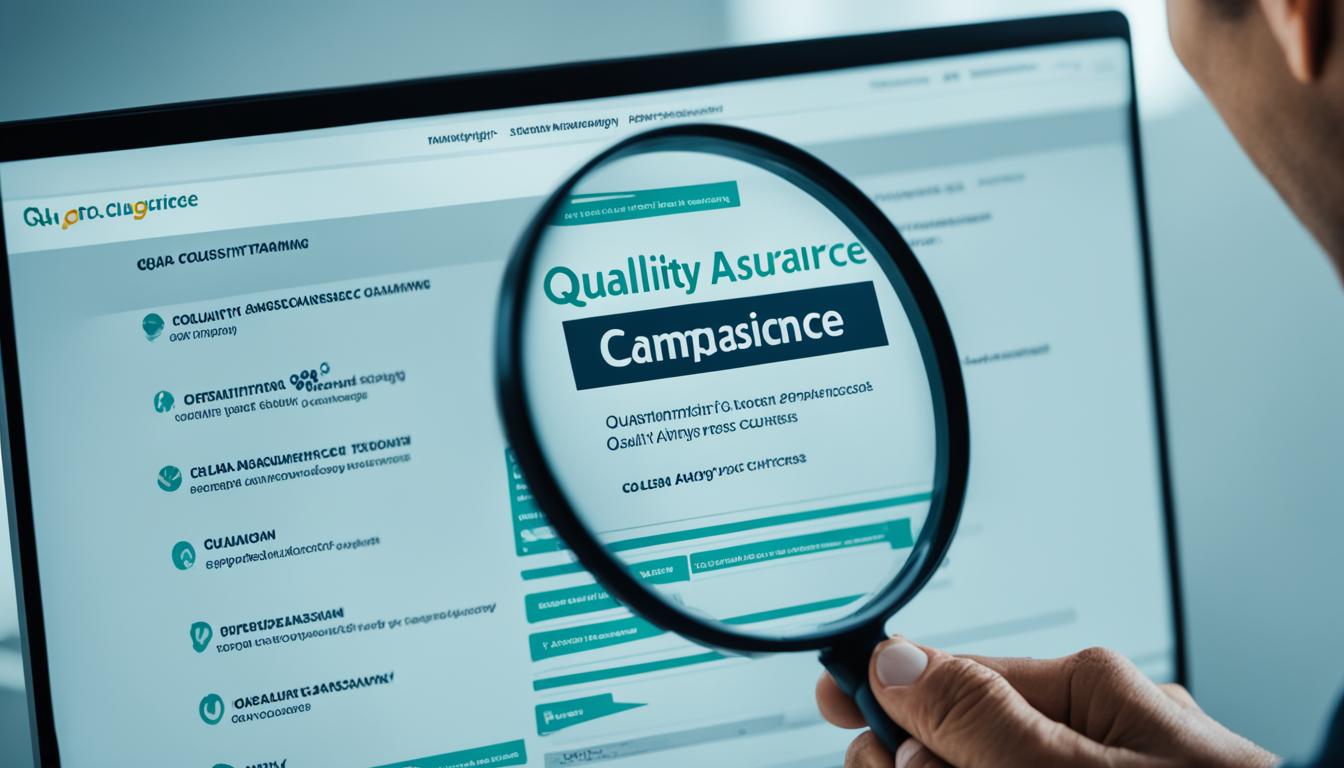Welcome to our article on Agile Testing and DevOps practices! In today’s fast-paced software development landscape, it is essential for companies to adopt agile methods and incorporate DevOps practices to guarantee the successful delivery of top-notch software solutions. This piece explores the relationship between agile testing and DevOps practices, providing detailed analysis of the techniques and tools utilized within this approach.
In this article, we will delve into the limitations of traditional testing models and how agile testing and DevOps practices offer a viable alternative. We will also discuss the practical implementation of agile testing, highlighting its collaborative approach, test automation, and focus on delivering quality software. Additionally, we will explore the DevOps practices that enhance testing efficiency and improve software reliability throughout the software development lifecycle. The impact of agile and DevOps practices on software development and the powerful synergy they create will also be addressed.
Key Takeaways:
- Agile testing and DevOps practices are crucial in ensuring software quality and efficiency.
- Traditional testing models like waterfall project management have limitations in scalability and efficiency.
- Agile testing involves a collaborative approach, early and continuous testing, and focus on delivering quality software.
- DevOps practices complement agile testing, emphasizing collaboration, automation, and continuous integration.
- The adoption of agile practices transforms software development, improving software quality and user experiences.
The Limitations of Traditional Testing Models
Traditional testing models, such as waterfall project management, have their limitations in terms of scalability and efficiency. These models follow a linear approach, where each phase of software development, including testing, is completed before moving on to the next. While this may seem structured and organized, it often leads to delays in the release process and compromises in the overall quality of the software.
In waterfall project management, software testing is typically performed at the end of the development cycle. This means that any bugs or issues discovered during testing may require significant rework, causing additional delays. Moreover, the context switch from development to testing introduces the risk of losing critical information and increases the likelihood of introducing new bugs.
Another limitation of traditional testing models is the accumulation of technical debt. Technical debt refers to the shortcuts or compromises made during the development process to meet tight deadlines. Testing is often one of the phases where technical debt accrues, leading to poor test coverage and lower software quality.
Regression testing, which is essential for ensuring that changes or fixes do not introduce new bugs, is often challenging to implement in traditional testing models. With limited time and resources, comprehensive regression testing becomes a daunting task, resulting in the possibility of undiscovered issues.
To overcome these limitations, organizations have turned to agile and DevOps testing. Agile testing adopts a collaborative approach, where developers and testers work together throughout the development process. This ensures that testing is performed early and continuously, preventing the accumulation of technical debt and reducing the risk of context switches and bugs.
DevOps testing complements agile testing by promoting a culture of collaboration and automation. Continuous integration and continuous delivery allow for faster and more efficient testing, eliminating the delays caused by sequential testing phases. With the emphasis on automation, organizations can achieve higher test coverage and reduce the chances of introducing bugs.
Agile and DevOps testing offer a more flexible and efficient alternative to traditional testing models. By adopting these methodologies, organizations can overcome the limitations of the waterfall approach and improve the overall software development process.
| Traditional Testing Models | Agile and DevOps Testing |
|---|---|
| Sequential and linear approach | Iterative and collaborative approach |
| Delays in release process | Continuous and early testing |
| Potential compromises in testing quality | Focus on improving software quality |
| Context switch between development and testing | Collaboration between developers and testers |
| Accumulation of technical debt | Prevention of technical debt through continuous testing |
| Challenges in regression testing | Efficient regression testing through automation |
By understanding the limitations of traditional testing models and embracing agile and DevOps testing, organizations can enhance the efficiency and quality of their software development processes.
Agile Testing in Practice
Agile testing is not merely a phase in the software development process; it is an approach that involves collaborative efforts and empowers developers to take ownership of testing. By adopting this agile testing approach, we can ensure that the quality assurance process becomes a collective responsibility.
One of the key tenets of agile testing is early and continuous testing. Instead of waiting for the completion of development, testing activities are integrated throughout the development process. This allows for early identification and resolution of defects, resulting in higher quality software.
Test automation plays a vital role in agile testing. Automating repetitive and time-consuming tasks allows developers and testers to focus on more critical aspects of software development. By leveraging test automation tools, such as Selenium and JUnit, we can streamline the testing process and improve efficiency.
Agile testing emphasizes the importance of delivering software that meets user expectations. This is achieved by incorporating user stories into the testing process. User stories help define the desired functionality from a user’s perspective, ensuring that the software addresses specific user needs.
Exploratory testing is another essential component of agile testing. Unlike scripted testing, exploratory testing encourages testers to actively explore the system, uncovering potential issues and gaining valuable insights. This flexible and adaptive approach allows for quick feedback and drives continuous improvement.
To summarize, agile testing is a collaborative and dynamic approach that empowers developers to take responsibility for testing. By integrating early and continuous testing, leveraging test automation, incorporating user stories, and embracing exploratory testing, we can deliver quality software that meets user expectations.
https://www.youtube.com/watch?v=U04gRvP_XFQ
| Agile Testing in Practice | Benefits |
|---|---|
| Collaborative testing | – Encourages shared responsibility – Facilitates effective communication – Fosters a sense of ownership |
| Early and continuous testing | – Identifies defects early on – Enables faster defect resolution – Improves software quality |
| Test automation | – Increases testing efficiency – Allows for faster feedback – Reduces manual effort |
| User stories | – Ensures alignment with user expectations – Focuses on specific user needs – Drives customer satisfaction |
| Exploratory testing | – Uncovers potential issues – Provides valuable insights – Promotes continuous improvement |
DevOps Practices for Efficient Testing
In the world of software development, collaboration and automation are essential for optimizing testing processes. DevOps practices play a significant role in enhancing the efficiency of testing activities, enabling teams to deliver reliable software with speed and accuracy. By emphasizing continuous integration, continuous delivery, and seamless collaboration between development and operations teams, DevOps practices streamline the entire software development lifecycle.
Automation is a key component of DevOps practices, ensuring consistent and rapid testing. Automated testing frameworks and tools help organizations achieve faster feedback loops, enabling early identification of issues and prompt resolution. By automating repetitive and time-consuming test cases, teams can focus on more complex and critical aspects of testing, ultimately improving software reliability.
Continuous integration (CI) and continuous delivery (CD) are paramount in DevOps testing. CI involves integrating code changes into a shared repository frequently, allowing teams to identify integration issues early and resolve them quickly. This ensures that bugs and conflicts are detected before they impact the software development pipeline. CD, on the other hand, focuses on delivering software in smaller, incremental releases, enabling faster time-to-market. By automating build, test, and deployment processes, teams can reduce manual errors and deploy software more frequently and reliably.
To illustrate the benefits of DevOps practices for efficient testing, consider the following example:
Company XYZ adopts DevOps practices, implementing automation and continuous integration in their testing processes. Previously, the development and operations teams had separate workflows, leading to delays in feedback and elongated deployment cycles. However, by embracing collaboration and automation, the teams achieve seamless integration and faster feedback loops. This results in reduced time spent on manual testing, increased productivity, and higher software quality. As a result, Company XYZ significantly improves its software reliability and gains a competitive edge in the market.
Let’s further understand the impact of DevOps practices on testing efficiency through the following table:
| DevOps Practices | Benefits |
|---|---|
| Collaboration | Promotes cross-functional teamwork, fosters shared responsibility, and enhances problem resolution. |
| Automation | Enables faster testing, reduces human errors, and frees up resources for more critical testing activities. |
| Continuous Integration | Identifies integration issues early, allows for timely resolutions, and ensures a more stable software development process. |
| Continuous Delivery | Enables faster time-to-market, accelerates software releases, and improves customer satisfaction. |
| Software Development Lifecycle | Streamlines testing throughout the entire development cycle, providing end-to-end visibility and control. |
| Software Reliability | Reduces the number of defects in production, enhances user experience, and increases customer trust. |
As highlighted in the table, DevOps practices have a profound impact on testing efficiency and software reliability. By utilizing collaborative approaches, automation, and continuous integration, organizations can optimize their testing processes and deliver high-quality software in a timely manner.
The Impact on Software Development
The adoption of agile practices revolutionizes the software development process, replacing traditional, linear approaches with iterative cycles. By embracing agile practices, we prioritize flexibility, adaptability, and collaboration, resulting in more efficient and successful software projects.
Agile development focuses on customer collaboration, recognizing the importance of involving users throughout the development life cycle. This customer-centric approach ensures that the software aligns closely with user expectations, leading to increased satisfaction and engagement.
Iterative development lies at the core of agile practices, allowing us to continuously refine and improve our software. Rather than following a fixed plan, we embrace an incremental approach, delivering value at regular intervals. This iterative cycle enables us to gather feedback and make necessary adjustments, ultimately leading to higher software quality.
Furthermore, the constant collaboration between cross-functional teams in agile environments promotes a shared understanding of user expectations and project goals. By fostering open communication and regular feedback loops, we can address issues in a timely manner and make well-informed decisions to ensure that the software meets the desired outcomes.
“Agile development empowers us to respond quickly to changing requirements, market dynamics, and user needs. It facilitates an environment where software quality is paramount, user expectations are met, and collaboration is key.”

Agile practices not only shape the software development process but also elevate user experiences. By focusing on iterative development, customer collaboration, and software quality, we create products that meet and exceed user expectations. This approach not only improves software functionality and usability but also fosters customer loyalty and satisfaction.
The Synergy of Agile and DevOps
The combination of agile and DevOps practices creates a powerful synergy that goes beyond software development. By leveraging the strengths of both methodologies, organizations can enhance collaboration, improve team efficiency, and achieve effective problem resolution. This synergy also leads to significant reductions in downtime and the establishment of a more resilient infrastructure.
Agile methodologies emphasize flexibility, iterative development, and effective communication, enabling teams to adapt quickly to changing requirements and deliver high-quality software. DevOps practices, on the other hand, focus on collaboration, automation, and continuous integration and delivery, streamlining the software development process and reducing operational inefficiencies.
“The synergy between agile and DevOps creates a working environment where collaboration and shared responsibility flourish. By breaking down silos and fostering a culture of collaboration, organizations can achieve greater efficiency and problem resolution.”
Collaboration is a key aspect of this synergy. With seamless integration between development, testing, and operations teams, organizations can eliminate bottlenecks, reduce handovers, and optimize overall team performance. By working together, teams can efficiently address challenges and effectively resolve issues, resulting in higher-quality software and improved customer satisfaction.
Furthermore, the combination of agile and DevOps practices significantly reduces downtime. Through automation and continuous integration, organizations can identify and resolve issues faster, minimizing the impact of potential disruptions. This not only ensures a more reliable and stable system but also enables teams to focus on innovation and value creation instead of firefighting and recovery.
To visualize the benefits of the synergy between agile and DevOps, refer to the table below, which showcases the positive impact on various aspects:
| Aspect | Agile | DevOps | Synergy |
|---|---|---|---|
| Collaboration | ✓ | ✓ | ✓ |
| Team Efficiency | ✓ | ✓ | ✓ |
| Problem Resolution | ✓ | ✓ | ✓ |
| Downtime Reduction | ✓ | ✓ | |
| Resilient Infrastructure | ✓ | ✓ |
The synergy between agile and DevOps practices encompasses collaboration, team efficiency, problem resolution, downtime reduction, and the establishment of a more resilient infrastructure. By harnessing this synergy, organizations can unlock new levels of efficiency, enhance software quality, and achieve their strategic objectives more effectively.
Continuous Improvement in Agile Testing
Agile testing is a dynamic process that thrives on continuous improvement. As agile testers, we understand the importance of staying ahead in the ever-evolving world of software development. We constantly seek ways to enhance our testing methodologies and stay at the forefront of industry best practices.
One way we achieve continuous improvement is through the incorporation of automation in our testing workflows. By leveraging automation tools and frameworks, we can streamline repetitive and time-consuming tasks, allowing us to focus on more complex and critical aspects of testing. Automation not only increases efficiency but also ensures consistent and reliable results.
Another crucial aspect of continuous improvement in agile testing is customer feedback. We actively seek feedback from our customers and stakeholders to gain insights into their changing needs and expectations. By incorporating their feedback into our testing processes, we can align our software with evolving customer requirements and deliver a product that exceeds their expectations.
Continuous improvement is not just about finding better ways of doing things; it’s about being responsive to change and fostering a culture of adaptability and growth. It’s about pushing the boundaries of our testing capabilities and embracing new ideas and technologies.
As agile testers, we understand the importance of being responsive to change. In today’s fast-paced and competitive market, software requirements can shift rapidly, and we must be agile enough to adapt. We embrace change and view it as an opportunity for growth and improvement. By staying flexible and open-minded, we can ensure that our testing processes remain relevant and effective in the face of evolving market demands.
Key Strategies for Continuous Improvement
To achieve continuous improvement in agile testing, we follow key strategies:
- Regular retrospective meetings: We conduct frequent retrospective meetings to reflect on our testing processes and identify areas for improvement. These meetings provide an opportunity to gather feedback from the team and collectively brainstorm ideas for enhancing our testing methodologies.
- Knowledge sharing: We believe in the power of collaboration and knowledge sharing within the team. By sharing our experiences and learnings, we create a culture of continuous learning and improvement. This enables us to leverage the collective expertise of the team and stay updated with the latest industry trends and practices.
- Training and skill development: We actively invest in training and skill development to stay updated with new tools, technologies, and testing frameworks. By continuously expanding our knowledge and skill set, we ensure that our testing practices remain cutting-edge and aligned with industry standards.
Continuous improvement is not a one-time event; it’s an ongoing journey that requires dedication and commitment. As agile testers, we are passionate about delivering high-quality software and driving innovation through continuous improvement.

Through continuous improvement, we strive to enhance our testing methodologies, improve our efficiency, and ultimately deliver software that meets and exceeds customer expectations. By embracing automation, seeking customer feedback, and remaining responsive to change, we can continuously elevate our testing capabilities and ensure the success of our agile projects.
Types of Testing in Agile
Agile testing encompasses various testing methodologies that play a vital role in ensuring software quality and meeting customer expectations. Let’s explore some of the key testing approaches used in agile development:
Acceptance Test-Driven Development
In acceptance test-driven development (ATDD), the focus is on defining acceptance criteria and creating tests based on those criteria before any code is written. By involving stakeholders in the process, ATDD ensures that the development team and customers have a shared understanding of requirements. This approach promotes collaboration and helps validate whether the software meets the desired criteria.
Behavior-Driven Development
Behavior-driven development (BDD) is an extension of test-driven development (TDD) that emphasizes collaboration between developers, testers, and business stakeholders. BDD aims to align technical language with business language, making it easier to discuss requirements and verify the system’s behavior. With BDD, tests are written in a user-readable format, allowing stakeholders to actively participate in the testing process.
Exploratory Testing
Exploratory testing is a dynamic approach where testers explore the software, learn its behavior, and design their tests on the fly. This technique relies on the tester’s expertise and creativity to identify potential issues that may not have been addressed by the defined test cases. Exploratory testing is particularly effective in uncovering complex bugs and providing rapid feedback on the software’s usability and user experience.
Session-Based Testing
Session-based testing offers a structured approach to exploratory testing. Testers are given time-boxed testing sessions, during which they focus on specific test charters or areas of the software. By setting clear goals and allocating specific time slots, session-based testing promotes efficiency and enables testers to maximize their exploration efforts. This method helps balance the benefits of structured and unstructured testing.
Each of these testing approaches brings its own benefits and can be applied based on the project’s needs and the team’s expertise. It’s crucial to choose the most suitable approach for your agile testing strategy to ensure comprehensive coverage and deliver high-quality software.
Conclusion
Agile and DevOps practices have revolutionized the world of software development, empowering organizations to thrive in today’s fast-paced and technology-driven landscape. By adopting these methodologies, businesses can enhance their organizational efficiency, drive transformation, and stay ahead of the competition.
The synergy between agile and DevOps practices is a game-changer. Agile methodologies enable iterative development, close collaboration with customers, and a focus on delivering high-quality software that meets user expectations. On the other hand, DevOps practices emphasize collaboration between development and operations teams, streamlining the software development lifecycle and improving software reliability.
Embracing agile and DevOps practices is not just about software development. It’s about creating a culture of continuous improvement and fostering efficiency across the entire organization. By breaking down silos and promoting collaboration, businesses can resolve problems faster, reduce downtime, and build a more resilient infrastructure.
In this ever-evolving world of technology, organizations that embrace agile and DevOps practices are well-positioned for success. By embracing these methodologies and staying committed to continuous improvement, businesses can transform their processes, drive innovation, and achieve greater efficiency in their software development endeavors.
FAQ
What are the limitations of traditional testing models?
Traditional testing models, such as waterfall project management, can be limited in terms of scalability and efficiency. They often lead to delays in the release process, compromises in testing quality, and difficulties in adapting to changing requirements.
What is agile testing and how does it work in practice?
Agile testing is a collaborative approach that empowers developers to take responsibility for testing. It emphasizes early and continuous testing throughout the development process, including test automation and exploratory testing. The focus is on delivering quality software that meets user expectations.
What is the role of DevOps practices in efficient testing?
DevOps practices complement agile testing by emphasizing collaboration between development and operations teams. Automation, continuous integration, and continuous delivery are key components of DevOps, enabling streamlined and efficient testing throughout the software development lifecycle. This results in improved software reliability and faster time-to-market.
How does the adoption of agile practices impact software development?
The adoption of agile practices transforms the software development process by replacing traditional, linear approaches with iterative cycles. Agile development focuses on customer collaboration, ensuring that the software aligns closely with user expectations. This results in higher software quality and better user experiences.
What is the synergy between agile and DevOps practices?
The combination of agile and DevOps practices creates a powerful synergy that goes beyond software development. By breaking down silos and promoting collaboration between teams, organizations can achieve greater efficiency and problem resolution. DevOps fosters shared responsibility and reduces downtime, leading to a more resilient infrastructure.
How does agile testing promote continuous improvement?
Agile testing is not a static process but a continuous journey of improvement. Agile testers constantly seek ways to enhance their testing methodologies, incorporating automation and customer feedback. They embrace change and responsiveness to ensure that the software meets evolving customer needs.
What are the different types of testing in agile?
Agile testing encompasses various testing methodologies, including acceptance test-driven development, behavior-driven development, exploratory testing, and session-based testing. Each method has its own unique benefits and can be tailored to the specific needs of the project and team.
Why are agile and DevOps practices essential for organizations?
Agile and DevOps practices have become essential for organizations to stay competitive and drive innovation in software development. By embracing these methodologies and fostering a culture of continuous improvement, businesses can transform their processes and achieve greater efficiency and success in the ever-evolving world of technology.









